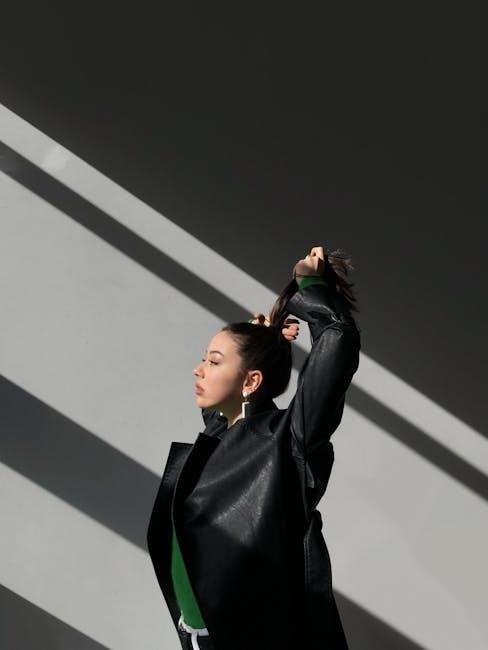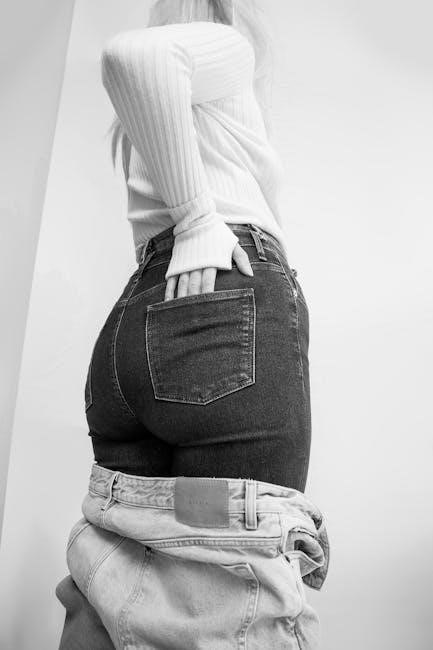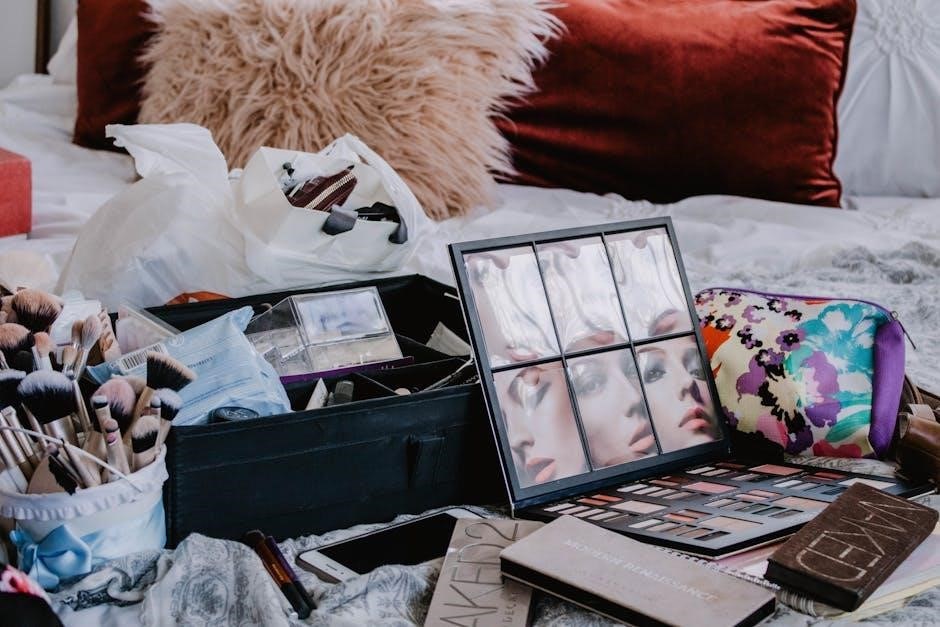
highlight contour guide
Article Plan: Highlight Contour Guide
This guide unveils the secrets to sculpting your face with makeup. We will explore essential techniques. Our focus is on highlighting and contouring. You’ll learn to enhance your natural features. Discover the transformative power of light and shadow. Master the art of facial definition.
In the realm of makeup artistry, few techniques possess the transformative power of highlighting and contouring. These techniques, when skillfully applied, can redefine facial features, enhance natural beauty, and create a sculpted, radiant appearance. Highlighting and contouring are not about masking or altering one’s true self; rather, they are about strategically using light and shadow to accentuate favorable features and subtly minimize others.
Highlighting involves applying a lighter shade to areas where light naturally hits the face, such as the cheekbones, brow bone, and bridge of the nose. This technique brings these areas forward, creating a luminous and lifted effect. Contouring, on the other hand, uses a darker shade to create depth and shadow in areas like the hollows of the cheeks, jawline, and temples. This helps to define and sculpt the face, adding dimension and structure.
The power of highlight and contour lies in their ability to create balance and harmony. By understanding how light and shadow interact with the face, one can manipulate these elements to achieve a desired aesthetic. Whether you seek a subtle enhancement for everyday wear or a dramatic transformation for a special occasion, mastering the art of highlight and contour can unlock a world of possibilities.
Understanding Highlight and Contour
To effectively wield the power of highlight and contour, a foundational understanding of these techniques is crucial. At its core, highlighting is about mimicking how light naturally reflects off the face. By applying a lighter shade to high points, we draw attention to those areas, making them appear more prominent. This creates a lifted, brighter, and more youthful appearance.
Conversely, contouring is about creating shadows. By strategically placing a darker shade in areas where shadows naturally occur, we can create the illusion of depth and definition. This can help to sculpt the face, making features like the cheekbones and jawline appear more defined. It’s essential to remember that contouring isn’t about creating harsh lines; it’s about subtly enhancing the natural shadows of the face.
The interplay between highlight and contour is what creates the overall effect. The highlight brings areas forward, while the contour pushes areas back. This contrast creates dimension and prevents the face from looking flat. Understanding this relationship is the key to achieving a balanced and natural-looking result. With practice and a keen eye, anyone can master the art of highlight and contour.
Identifying Your Face Shape
Before diving into the world of highlighting and contouring, it’s paramount to understand your unique face shape. Different face shapes benefit from different application techniques. Recognizing your face shape allows you to tailor your highlight and contour to enhance your specific features and create a balanced, harmonious look. The most common face shapes include oval, round, square, heart, diamond, and oblong.
To determine your face shape, start by examining your face in a mirror. Consider the overall proportions, the width of your forehead, cheekbones, and jawline, and the length of your face. An oval face is generally longer than it is wide, with a rounded jawline. A round face has similar width and length, with soft, rounded features. A square face has a strong, angular jawline with similar width across the forehead, cheekbones, and jawline. A heart-shaped face is wider at the forehead and tapers down to a pointed chin. A diamond face is narrow at the forehead and jawline, with wide cheekbones. An oblong face is long and narrow, with similar width throughout.
Once you’ve identified your face shape, you can begin to learn how to highlight and contour to best flatter your features. Remember that these are just guidelines, and you can always experiment to find what works best for you. Embrace your individuality and use highlight and contour as tools to express your unique beauty.
Choosing the Right Products
Selecting the correct products is crucial for achieving a natural and sculpted look. The ideal highlight and contour products will complement your skin tone and type, blend seamlessly, and provide the desired level of intensity. For highlighting, consider cream, liquid, or powder formulas. Cream and liquid highlights offer a dewy, radiant finish, while powder highlights provide a more subtle glow. Choose a shade that is one to two shades lighter than your skin tone, with either a shimmer or matte finish, depending on your preference.
For contouring, opt for a product that is two to three shades darker than your skin tone. Cool-toned contour shades mimic natural shadows, while warm-toned shades can add warmth and dimension. Cream and stick contour products are ideal for precise application and blending, while powder contours are great for setting cream products or creating a softer, diffused effect. Consider your skin type when choosing products; oily skin may benefit from powder formulas, while dry skin may prefer cream or liquid options.
Ultimately, the best way to find the right products is to experiment and discover what works best for your skin. Don’t be afraid to try different formulas, shades, and finishes until you achieve your desired look. Remember to always blend thoroughly for a seamless and natural finish.
Highlight Placement Guide
Strategic highlight placement is key to enhancing your features and creating a radiant complexion. The goal is to draw light to the high points of your face, making them appear more prominent. A general rule of thumb is to apply highlight to areas where light naturally hits. This includes the cheekbones, brow bone, bridge of the nose, inner corner of the eyes, and Cupid’s bow.

For the cheekbones, apply highlight along the upper part, blending upwards towards the temples. This will create a lifted and sculpted effect. On the brow bone, apply highlight just below the arch of your eyebrow to accentuate its shape and create a more defined look. A touch of highlight on the bridge of the nose can make it appear longer and slimmer. Be careful not to overdo it, as too much highlight can make the nose look unnatural.
Applying highlight to the inner corner of the eyes will brighten the eyes and make you look more awake. Finally, a dab of highlight on the Cupid’s bow will make your lips appear fuller and more defined. Remember to blend the highlight seamlessly into your skin for a natural and radiant finish. Adjust the placement based on your face shape and desired effect.
Contour Placement Guide

Contouring is all about creating shadows to define and sculpt your face. The key is to mimic the natural shadows that occur when light hits your face. A general guideline is to apply contour to the areas you want to recede or appear less prominent.
Common areas to contour include the hollows of your cheeks, along the jawline, the sides of your nose, and the temples. To find the hollows of your cheeks, suck in your cheeks and apply contour along the line that forms from your ear to the corner of your mouth. Blend this well to avoid harsh lines. Contouring along the jawline can create a more defined and sculpted appearance. Apply the contour along the underside of your jawline and blend downwards towards your neck.
For the nose, apply contour down the sides of your nose to make it appear slimmer. Be sure to blend the contour well to avoid a harsh, unnatural look. Contouring the temples can narrow the forehead and create a more balanced facial shape. Remember that contour placement should be tailored to your individual face shape. Experiment with different placements to find what works best for you. Start with a light hand and build up the intensity as needed.
Blending Techniques for a Flawless Finish
Blending is paramount to achieving a natural and seamless highlight and contour. Without proper blending, your makeup can look harsh and unnatural. Invest in good quality blending brushes. Fluffy, soft brushes are ideal for diffusing the edges of your highlight and contour.
Use small, circular motions when blending. This helps to gradually blend the product into the skin. Avoid dragging the product, which can create streaks and unevenness. Focus on blending the edges of your highlight and contour into the surrounding skin. There should be no visible lines or harsh transitions.
A damp makeup sponge can also be used to blend highlight and contour. The dampness helps to sheer out the product and create a more natural finish. Use a stippling motion to press the product into the skin. Avoid wiping, which can remove the product altogether. Regularly clean your blending brushes and sponges. Dirty tools can harbor bacteria and lead to breakouts. They can also hinder the blending process. Take your time and be patient. Blending takes practice, so don’t get discouraged if you don’t get it perfect right away. The key is to keep blending until there are no harsh lines.
Highlighting for Different Skin Tones
The perfect highlight shade varies depending on your skin tone. Choosing the right shade is crucial for a natural, radiant glow. For fair skin, opt for champagne, pearl, or light gold highlighters. These shades add luminosity without appearing too stark. Avoid anything too dark or bronzy, as it can look muddy.
For medium skin tones, try gold, rose gold, or peach highlighters. These shades complement the warmth in your complexion. Experiment with different intensities to find what works best for you. For olive skin tones, bronze, copper, or golden bronze highlighters are stunning. They enhance the natural warmth and add a beautiful radiance. Darker skin tones can handle deeper, more pigmented highlighters. Look for shades like bronze, copper, or even rich gold. Avoid anything too ashy or pale, as it can look chalky.
Consider your undertones when choosing a highlighter. Warm undertones look best with gold or bronze highlighters. Cool undertones shine with silver or pearl highlighters. Neutral undertones can experiment with a wider range of shades. Always test the highlighter on your skin before applying it to your face. This will help you ensure that it’s the right shade and intensity for your complexion.
Contouring for Different Skin Tones

Contouring is not a one-size-fits-all technique. The ideal contour shade depends heavily on your skin tone. Choosing the wrong shade can result in an unnatural or muddy appearance. For fair skin, opt for cool-toned, light taupe shades. Avoid anything too warm or orange, as it can look unnatural. Apply with a light hand and blend thoroughly.
For medium skin tones, try neutral or slightly warm contour shades. Taupe, muted brown, or even a hint of peach can work well. Adjust the intensity based on your desired level of definition. For olive skin tones, consider using contour shades with a green or grey undertone. This will help to create a more natural shadow. Avoid anything too red or orange. Darker skin tones can handle deeper, more pigmented contour shades. Look for shades like deep brown, mahogany, or even a cool-toned black. Be sure to blend well to avoid harsh lines.
Consider your undertones when choosing a contour shade. Cool undertones look best with cool-toned contour shades. Warm undertones shine with warm-toned contour shades. Neutral undertones can experiment with a wider range of shades. Always test the contour shade on your skin before applying it to your face. This will help you ensure that it’s the right shade and intensity for your complexion. Remember to blend, blend, blend!
Common Mistakes to Avoid
Highlighting and contouring can dramatically enhance your features, but common errors can lead to a less-than-desirable outcome. One of the most frequent mistakes is using the wrong shade of contour. Selecting a shade that is too warm or orange can make your contour look unnatural. Similarly, a shade that is too dark can appear muddy.
Another common mistake is applying too much product. Start with a small amount and gradually build up the intensity; This will allow you to control the placement and avoid harsh lines. Neglecting to blend properly is another major pitfall. Unblended highlight and contour can look stark and unnatural. Always use a blending brush or sponge to seamlessly blend the products into your skin.
Incorrect highlight placement can also detract from your overall look. Applying highlight too low on your cheekbones or too close to your nose can accentuate unwanted features. Understanding your face shape and placing highlight strategically is key. Using shimmery highlight on textured skin can emphasize imperfections. Opt for a matte or satin finish instead. Finally, forgetting to set your highlight and contour with powder can cause them to fade or move throughout the day. A light dusting of translucent powder will help to keep your makeup in place;
Advanced Highlighting and Contouring Techniques
Once you’ve mastered the basics, you can explore advanced highlighting and contouring techniques. These techniques add dimension and refinement to your makeup look. One popular technique is color correcting with contour. Use a green-toned contour to neutralize redness. Apply a peach-toned highlight to brighten dull areas.

Another advanced technique is using cream and powder products together. Apply cream contour and highlight for a natural, sculpted base. Set them with powder products for longer wear and added intensity. Strobing is a highlighting technique that focuses solely on enhancing the high points of the face. It creates a dewy, radiant glow.
For a more dramatic effect, try using a darker contour shade to create deeper shadows. This is ideal for special occasions or photoshoots. Reverse contouring involves highlighting the areas you would normally contour and contouring the areas you would normally highlight. This technique can create a softer, more diffused look. Experiment with different brushes and tools to achieve various effects. A smaller, angled brush is ideal for precise contour placement. A large, fluffy brush is perfect for blending highlight seamlessly. Remember to practice and adapt these techniques to suit your unique features and preferences.
Congratulations! You’ve journeyed through the world of highlighting and contouring. Now, you possess the knowledge to sculpt your face with confidence. Remember, mastering this art is a process of experimentation and refinement. Don’t be afraid to try new techniques and products to discover what works best for you.
The key to a flawless finish is blending. Blend, blend, blend until there are no harsh lines. Highlighting and contouring are not just about changing your appearance. It’s about enhancing your natural beauty and feeling confident in your own skin. Use these techniques to accentuate your best features and create a look that makes you feel empowered.
Whether you’re aiming for a subtle, everyday enhancement or a dramatic, red-carpet-ready transformation, the principles remain the same. Understand your face shape, choose the right products, and practice your blending skills. With dedication and a little creativity, you can achieve stunning results. So go ahead, pick up your brushes, and start sculpting your way to a more radiant and defined you. Embrace the power of light and shadow. Unleash your inner artist. Enjoy the journey of self-discovery through makeup!

